Driving through a eucalyptus forest on approach to Braga, I sent a text to my wife: "This is the absolute best part of Portugal. I think we made a mistake moving to Lisbon. This is where we should live."
Northern Portugal feels very, very different from the rest of the country.
Quieter. Cleaner. Less traffic. Different cuisine. Locals seem less stressed.
The region looks different, too—like the gods of geography pulled together the best of San Francisco, the Pacific Northwest, and Asheville, North Carolina, molded it into a compact diorama, and plopped it down onto a corner of Western Europe that, aside from the city of Porto, seems surprisingly under-appreciated by foreigners looking to relocate to Portugal.
I’m hoping to rectify that.
I spent a week driving through Northern Portugal, or the northwestern portion, to be precise. It’s made up of Porto, Portugal’s second-largest city (behind Lisbon) and an expat hotspot; Braga, a university town surrounded by mountains; Caminha, a small town (village, really) along the Minho River that separates Portugal from Spain; and the beach towns from Esposende up to Vila Praia de Âncora.
Get Your Free Portugal Report Today!
Get Your Free Portugal Report Today!
Discover more info about lesser-known parts of Portugal and other European countries in our daily postcard e-letter. Simply enter your email address below and we’ll send you a FREE REPORT – Explore the Old World in Laidback Portugal.

By submitting your email address, you will receive a free subscription to IL Postcards, The Untourist Daily and special offers from International Living and our affiliates. You can unsubscribe at any time, and we encourage you to read more about our Privacy Policy.
The journey marked my third trip to this part of the country. And every time I’m here, I am struck by how much more at ease I feel… surrounded by rivers, the ocean, fresh air, and heavily forested mountains.
Plus, the north is a great value. On the whole, Portugal can be light on the wallet. But most foreigners alight in the capital of Lisbon, where they quickly come to realize that many of their key costs in the Portuguese capital are not dramatically lower than in the US.
A digital nomad couple from Sacramento I met at a farmers market in 2024 told me they’re not saving nearly the sum they thought they would by relocating to Lisbon. But they’re over the moon with Portugal’s safety, their new chill lifestyle, and the freshness of the food—the absence of a chemistry set in a box of cereal makes them feel healthier.
Plus, their healthcare costs "are shockingly cheaper for much better coverage."
But their apartment in a stylish area of Lisbon known as Saldanha is $3,320 per month, not much less than their rent in Sacramento.
"This is not the version of cheaper I always read about in the stories I see in the US about Americans moving to Portugal."
That cheaper version of Portugal does, however, exist.
But it’s up north.
Porto: Portland and Seattle’s Love Child

When the Portland suburb of Beaverton became too expensive, Jennifer and Chuck Phillips, both in their 50s, began thinking of a move from the US to Portugal.
The couple’s 14-year-old son was the catalyst, as he had long been "obsessed with moving to Europe," Jennifer said. "It was a dream for him. He hated the suburbs. He wanted to live in a city.
The family toured Portugal in August 2024. They visited the Algarve, Portugal’s beautiful beachy underbelly to the south, but it didn’t have any big cities. Faro, the largest Algarve town, is home to just 120,000.
Lisbon, with three million people in the metro area, certainly provides big-city ambiance and amenities, but international schools for their son were two- to three-times pricier. Then they discovered Porto. "We got a more personal vibe up here," Jennifer said. "People seem nicer up here. The views are nicer. The architecture. The river. And we didn’t want to be too hot."
By December, the Phillips had D7 visas in hand and were living in Bolhão, the heart of Porto’s historic, vibrant, and hilly center. (The D7 is aimed at retirees with enough provable, passive income to support themselves.) Though the Phillips consider themselves semi-retired, they’re thinking about new careers maybe something online or opening a local shop.
With 1.7 million people across metropolitan Porto, the city is about the size of metro Nashville. It’s home to nine universities, Portugal’s two major healthcare systems, and an international airport with direct flights to most major European cities. (There’s even a direct flight to Newark, New Jersey, the only non-European destination on the departures board.)
The Douro River bisects Porto in one of Europe’s most picturesque urban-riverine cityscapes. The north bank is home to the Ribeira district and the Sé neighborhood, the oldest in Porto, dating to the 14th century. For those who love history, ancient cathedrals, hidden cobblestone alleys, and hills guaranteed to give you firmer glutes, this is the place to be.
Rents are higher in Porto, driven by the beauty of this area and the convenience of centrality. However, the area has limited access to the metro and street trams, and parking can be a nightmare. Navigating streets that seem too narrow can be nerve-racking if not impossible. Plan on walking a lot—seemingly uphill both ways—and don’t expect to own a car.
Bolhão is slightly more forgiving. The Phillips found a two-bedroom, two-bath apartment for about $1,900 per month. And the area is packed with city amenities. The neighborhood butts up against the northern edge of Ribeira and is known for its iconic central market, the Mercado do Bolhão. Hills are less pronounced and streets are more amenable to cars and parking.
Rents and home prices in Bolhão are generally cheaper than Lisbon, but not massively cheaper. The three-bedroom, three-bath apartment my wife and I rent in Lisbon for the equivalent of $2,185 would be about $2,000 in Bolhão. In the areas of Porto where expats tend to live, overall rental prices on a square meter basis are about 10% lower than Lisbon.
Just across the bi-level Dom Luis I Bridge—the 19th century iron span designed by one of Gustave Eiffel’s protégés—lies the quieter quarter of Vila Nova de Gaia.
The area, known simply as Gaia, is technically its own city but it functions like part of central Porto. It’s connected to the north shore by way of a light-rail line crossing the top level of the Dom Luis bridge—one of the world’s most scenic mass-transit journeys. Or you can walk across the lower level in about two minutes, longer if you linger for the obligatory picture-taking of the gorgeous urban and river scene.
With postcard views looking back across the Douro and iconic bridge, Gaia is laced with "port lodges." These facilities are where Portugal’s famous Douro Valley wines have historically been transformed into what is, perhaps, the country’s most famous export: port wine.
From the north side of the Douro, Gaia’s history of sweet wine is apparent. The waterfront is packed with signage for all the famous and lesser-known brands of port: Calem, Sandeman, Kopke, Cockburn’s, Burmester, and others. Many of these port lodges are open for tours and tastings.
Rents in Gaia are among the most affordable in Porto, particularly for those seeking a view. While walking around the area one sunny afternoon, I saw workers renovating a flat and was allowed a peek into the nearly completed remodel of a small two-bedroom, 800-square-foot apartment. It was quite lovely—wide wood plank floors, polished light-wood trim, a small kitchen with stone countertops, and bright airy bedrooms with a large deck offering great high-floor views out over Gaia and Ribeira. Cost: $1,250 per month.
Then there’s the weather…
Yes It’s Rainier Here, But…
Reputations are hard to shake, particularly when they’re rooted in a smidgen of truth.
Residents here reportedly rust away in a never-ending miasma of wetness. There’s some truth to that. Northern Portugal is rainier and cooler than the rest of the country, with a climate similar to the US Pacific Northwest.
Then again, that water-logged reputation is a lot like the reputation for never-ending rain that dogs Seattle and Portland: overblown.
Lauren Burnhill, an American expat who left metro DC for Europe a few years back works with climate issues, with clients based mainly in Northern Europe and the UK.
Lauren first landed in Amsterdam by way of a residence visa available to all Americans through the Dutch American Friendship Treaty. But the Netherlands "was the wrong lifestyle choice. I didn’t feel at home, and Amsterdam is a very expensive city."
So, she recalibrated what she wanted for her lifestyle and found it in Porto.
"I didn’t even consider the rest of Portugal," Lauren told me. "Central and southern Portugal will be increasingly too hot and too dry. But northern Portugal, even if it does get hotter, will still be lovely."
Nine months of the year, the weather in Porto is sunny and warm—70 to 75 F. Winter is 55 to 60 F and 40 to 45 F at night. "That’s not hardship cold," Lauren says. "Rain starts in November and runs through March, so there are more rainy days than the rest of the year. But rain here is not tropical rain. It’s more of a drizzle all day, with maybe a squall, and every now and then a real storm."
Lower Expenses, Higher Quality of Life
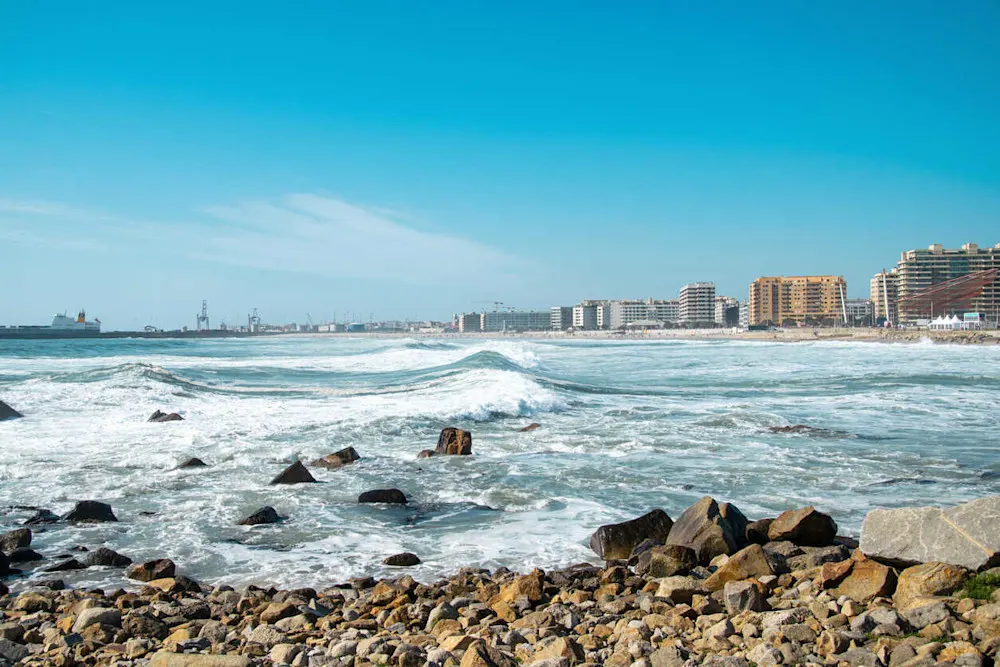
As a 63-year-old single woman coming from DC, Lauren says safety was one of her factors.
"Portugal was ranked No. 3 in the world for safety, and I really do feel safe here in Porto. Taking the metro home in DC, you’re always aware of the metro station you’re using, and then walking home you have to be alert. But here, I have no worries at night with the metro or walking home. This is the kind of place where you leave your wallet on the table and someone is going to chase you down to return it."
Lauren, who also arrived on a D7 visa, started out living in the center of Porto, like the Phillips. But she soon discovered the limitations of what you can do in the town center without a car. "Plus," she added, "I’m fond of closets and my washing machines"—amenities not always common in the older, smaller apartments that define the ancient centers of Porto, Lisbon, and other Portuguese cities.
Today, Lauren lives in Matosinhos Sul, one of Porto’s westernmost neighborhoods that sit at the edge of the Atlantic Ocean. She’s within walking distance of a large supermarket and four blocks from both the ocean and the metro. (And she has a washing machine.)
She cut her monthly expenses dramatically… "but I didn’t lower my quality of life."
Lauren lives in a 600-square-foot, one-bedroom apartment for just $850 per month. "With water, electricity, a mobile plan, internet, and health insurance, my all-in monthly expenses are under $1,500."
Her DC apartment—an 800-square-foot, one-bedroom with utilities—was $1,800.
Healthcare is where her savings are extreme. Back in the States, Lauren was paying $820 per month for a policy with a $3,000 deductible—an expense so large relative to her income that "I skipped health insurance for two years; I was winging it."
In Porto her policy with one of the country’s leading private insurers, Medis, is €73 a month (about $76) with an added dental plan. "Because I have private insurance I can afford, I set up appointments now just to take care of things (something she skipped back in the US). I have never filed an insurance claim in this country, even after having broken my wrist and shoulder. The ambulance, x-rays, casts, and slings—no one asked for a cent." It was all paid by the public (government-run) system. "I got a bill from the hospital for €3 because the guy who cut the cast off was a freelancer. Just the ambulance cost alone at home would have ruined my budget for the year."
Uncrowded Beaches in the Northwest
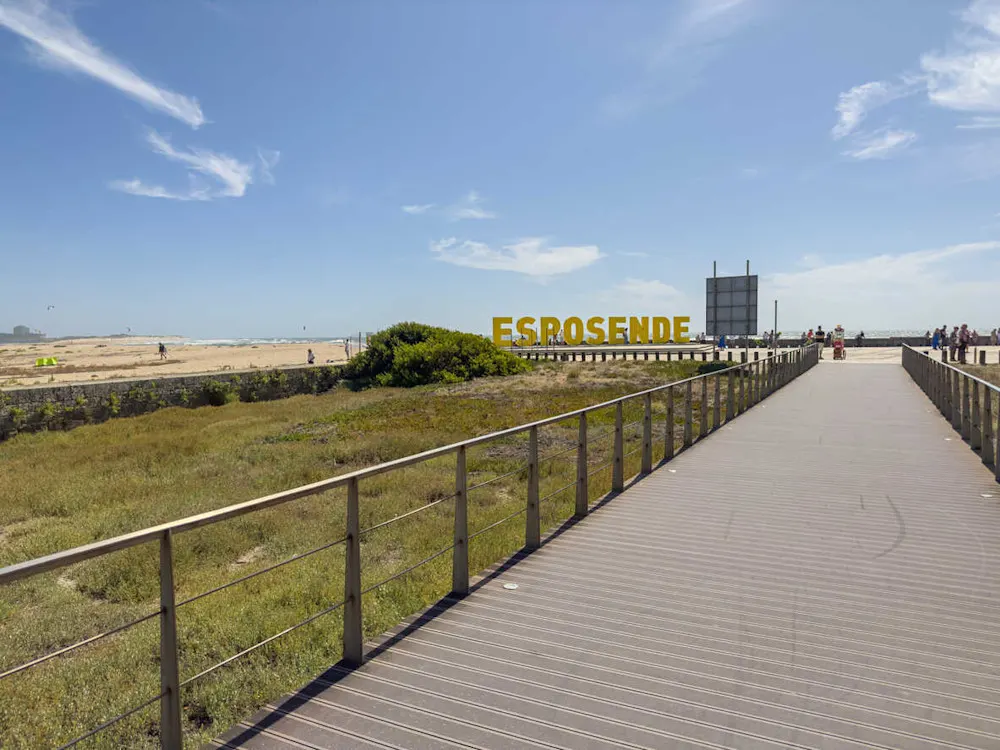
Slightly less than an hour north of Lauren’s apartment is the oceanfront city of Esposende. This is beachside living, absent the tourists—which is hard to find these days in most of Portugal.
The town of 34,000 people is as provincial as you might expect. Nights are quiet, with just a few eateries open along the sea and in the old, picturesque, and pleasantly small town center. The sandy beaches are relatively wide, but the Atlantic waters here are so chilly you half expect to see polar bears on vacation.
And Esposende is so affordable. A three-bedroom, 1,300-square-foot apartment in the city center is just $885 per month.
Even more of a price shock is an uber-modern upscale newbuild duplex just outside the town on the banks of the Cavado River, within walking distance to the beach. Four bedrooms, three baths, gourmet kitchen, private parking, both a terrace and a balcony, and even a private plunge pool, all spread across 3,056 square feet of living area… for $411,000.
You’re less than an hour from Porto and just 30 minutes from Porto’s international airport.
Farther north is perhaps my favorite beach town in the country: Vila Praia de Âncora. Home to less than 5,000, the town sits at the mouth of the Ancora River, where a wide beach stretches out for at least a mile. Behind the town rises the Serra d’Arga, a rugged landscape of peaks, plateaus, and forests shaping a large portion of Portugal’s north.
The waterfront, defined by both narrow river mouth and ocean, is a short street of low-rise apartments and hotels. The ground level is populated by a string of restaurants plating up the area’s locally-caught seafood. Every June the town hosts the Sea and Sardine Festival. The event draws Portuguese from all over the country as well as Spaniards, given that Spain is just seven miles to the north as the crow flies (though the trip takes 30 minutes by car since you have to drive to the nearest bridge in Lovelhe to cross the Minho River).
Outside of the busy summer months, this is quiet seaside living, much like Esposende. Âncora is smaller, but I’d argue it has a prettier setting with the ocean and river. The pathway into the Serra d’Arga is for those who are outdoorsy and like hiking, mountain biking, birding, and the like.
Despite its size, however, Âncora locals don’t want for services. Banks, supermarkets, doctors, dentists—they’re all here. The nearest major medical center is less than 20 minutes to the south in Viana do Castelo, population 85,000 (also a cute seaside town worth checking out).
Lifestyle affordability in Âncora is similar to Esposende. At $270,000, you can pick up a 1,000-square-foot new build two-bedroom, two-bath apartment two minutes from the beach. For $190,000, you can buy a 750-square-foot two-bedroom built in 1985 that’s easily livable albeit pleading for an update in every room. But it’s close to the center of town and has a large deck with grand views of the ocean just a few blocks away.
But the rising star of Portugal is farther up the road…
Get Your Free Portugal Report Today!
Get Your Free Portugal Report Today!
Discover more info about lesser-known parts of Portugal and other European countries in our daily postcard e-letter. Simply enter your email address below and we’ll send you a FREE REPORT – Explore the Old World in Laidback Portugal.

By submitting your email address, you will receive a free subscription to IL Postcards, The Untourist Daily and special offers from International Living and our affiliates. You can unsubscribe at any time, and we encourage you to read more about our Privacy Policy.
Caminha: The Town I Truly Fell For…
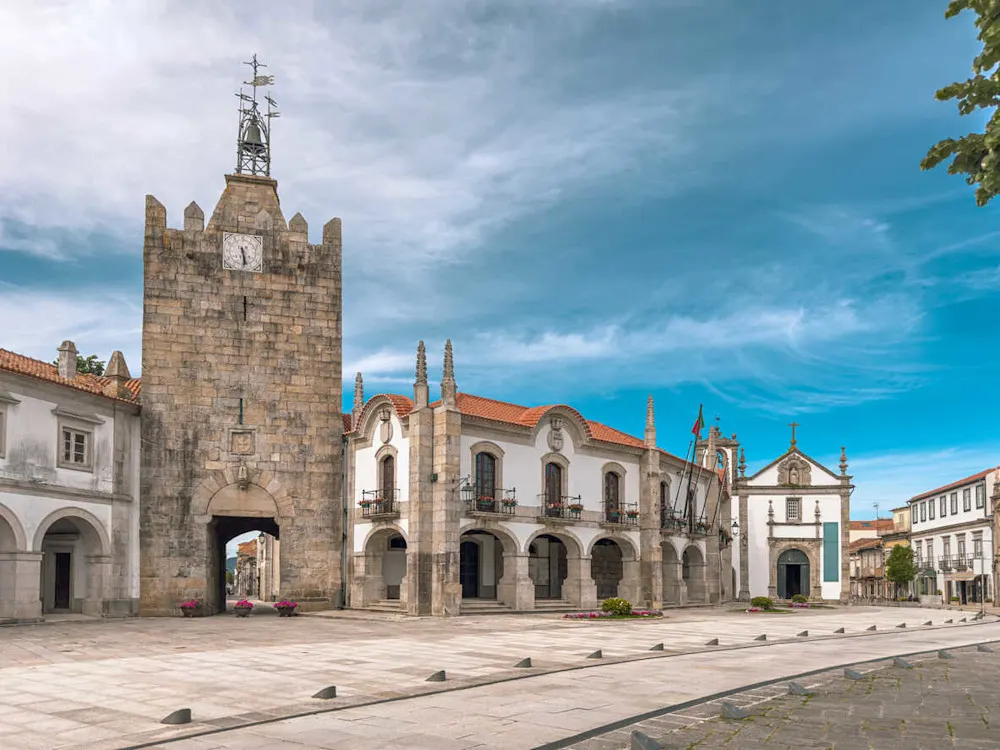
It was "love at first sight" when I found Caminha…
Caminha feels like a refuge from the world. Stars are brighter at night here because light pollution is limited.
Fronted by the wide Minha River and backed up against forested hills, Caminha is a town of less than 20,000 at the far northern edge of Portugal. There’s no population of size this far north—just scattered towns of a few tens of thousands here and there.
Caminha rose up as a fishing village in the fifth century, when it was part of the Kingdom of Galicia covering the northwest corner of what is Spain and Portugal is today. The town is a modernday reflection of the Old Portugal—that existed before mass tourism transformed Lisbon and the Algarve.
Caminha looks and feels like a miniaturized version of the best of Lisbon—red-tiled roofs white-stucco walls, and building exteriors wrapped in Portugal’s famous glazed azulejo tiles.
The cobblestone tree-lined central square wraps around a large 16th-century fountain. Al fresco tables lure espresso-drinking retirees in the early morning hours. Old Town, small and photogenic, is a warren of narrow alleys slinking off in different directions, weaving through centuries-old façades of homes and shops selling everything from fresh fruits and vegetables to locally made clothes and porcelain tiles.
Throughout the Old Town area, 17th and 18th century stone buildings stand in various stages of decrepitude. Those that have been fully remodeled are, in a word, stunning. Ancient and original stone walls with wooden ceiling beams sheltering all the upscale amenities of a modern life. Some offer views out over the Minha River and Spanish hills on the other side.
Wandering through the alleys late one afternoon, I found a remodel in progress: a 1,300-square-foot two-bedroom apartment in a stone building just one block off the river. It’s the equivalent of $203,000. In Lisbon, the same kind of newly remodeled property would be $450,000 or more, depending on the neighborhood.
After living in Porto for two-and-a-half years, Jill Leigh moved to Caminha in summer 2024. Like the Phillips, the 66-year-old arrived from the Portland area, which probably speaks to the fact that those who vibe with the climate and geography of the Pacific Northwest will feel comfortable in this part of Portugal.
Jill left the US in 2021 because "I like to travel in Europe, but the cost of getting to Europe from Portland diminishes what I can afford when I get here." Living in Portugal means two-hour flights to Rome or Paris or wherever.
Part of that experience was meeting another American, Michael, 71, in Coimbra and falling in love. Together, they bought a piece of land and planned to build a house outside Caminha.
"But we just really loved Caminha proper and decided we wanted to be here," Jill told me. "It’s a really special place. It’s not for people who want tons of nightlife action, but it’s really great if you want a quiet life and appreciate the outdoors and a temperate climate."
Jill and Michael found a three-bedroom, three-bath home built by a local stonemason in the traditional Portuguese style "so it looks like an old stone house, though it’s actually not," Jill says. The bottom floor is an apartment that the couple have turned into a studio for Michael, who’s an oil painter. She doesn’t say what the house cost, but notes, "We didn’t come to Portugal with megabucks. I can’t even imagine what this house would cost in Portland. I know I couldn’t afford it."
Overall, her cost of living in Caminha is much less than in the US. "When I was in Porto, rent was half what I paid in Oregon. Life insurance is one-third the cost. Health insurance—so much cheaper. I’m finding I’m much more willing to go do the things that need doing because I can afford them here.
"We have no plans to go back to the US. We will be here till the end."
Braga: A Taste of North Carolina
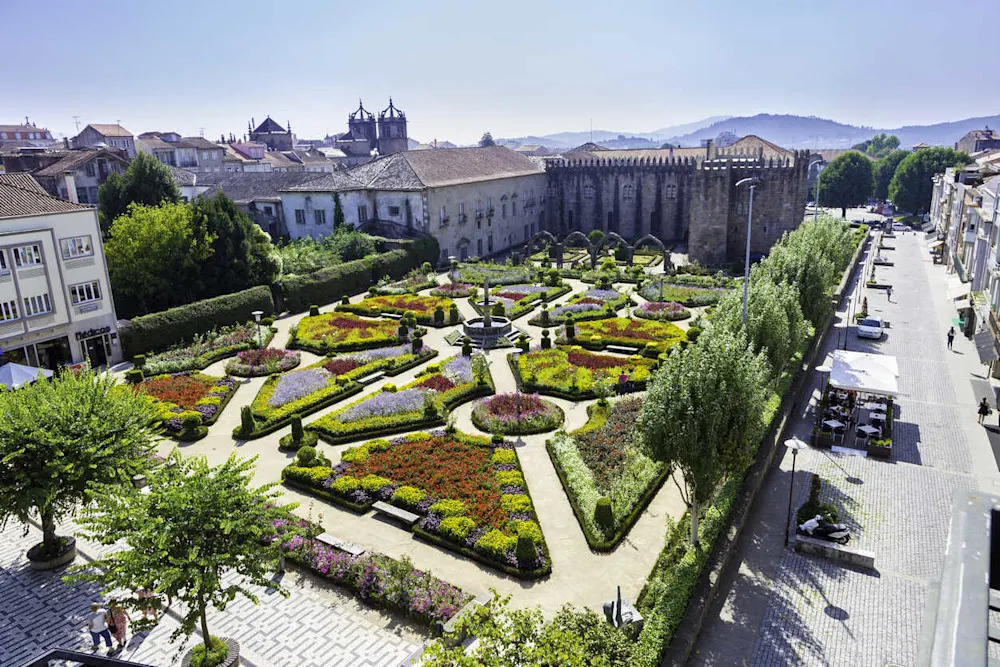
Asheville, North Carolina, was my first thought as I snaked through the forested mountains separating Caminha from Braga, an hour to the south.
The drive reminded me of those I’ve taken through the Blue Ridge Mountains—winding roads, thick forests (mainly pine and eucalyptus here), and panoramic views out over ravines, valleys, and undulating mountains and hills.
The Braga city center resembles Lisbon and Porto in that Braga’s history wraps in Iron Age settlements, Celtic rule, Roman occupation, and part of North Africa’s Moorish Empire.
Today, the city feels more Gothic and Baroque than anything, largely because of the Braga Cathedral, the oldest in Portugal. Part of it dates back to the 15th century; other parts to the 17th.
The cathedral sits at what was once the center of a walled city with just a dozen or so streets. Braga has spread out, but the entire Old Town is easily navigable in a day, or a weekend at most.
At just a fifth the size of Porto and less than a tenth the size of metro Lisbon, Braga feels more manageable. Braga is Portugal’s third-largest metro area with roughly 200,000 in the metro area and 150,000-ish in the city proper. Buildings here are human scale, whereas in Lisbon you’ll find office and apartment towers 10 floors high and taller. Outside of Old Town, you’ll more commonly find detached housing instead of apartment buildings.
Braga is also one of Portugal’s leading university towns, which, because of the large population of students, makes this Portugal’s youngest city demographically.
A hotelier I met here runs the fantastic Porta Nova Collection House just inside the gates of Old Town, and he told me the hotel regularly hosts American guests "who are meeting with their real estate agents, right here where we’re talking. Lots of Americans are moving here. I tell you, Braga is the best part of Portugal."
Many expats, he told me, live in the city center because everything is so convenient. Of course, conveniences come at a cost. Prices in Braga’s OId Town are among the highest in the city.
You can buy a fixer-upper for under $300,000. Already-updated apartments start at about $350,000 and run to about $500,000.
Outside of Old Town, you’ll find some very high-end properties up in the hills overlooking the city that run to $1.1 million or more. But you’ll also find highly affordable detached homes. Fifteen minutes east of the centrally located University of Minho is the neighborhood/village of Espinho. It’s popular with families because it backs up to forested hills and it’s more affordable. One example: a 5,500-square-foot, four-bedroom new build home on a quarter acre of land with an infinity pool and waterfall, game room, wine cellar, underfloor heating, and a three-car garage: $334,000.
For those who want to be outside the city but close enough to pop into town for major shopping and what not, Espinho is a fine option. Plus, you’re less than an hour’s drive from Porto’s international airport, giving you easy access to the rest of Europe or a direct flight back to the States.
For Me, North Beats South
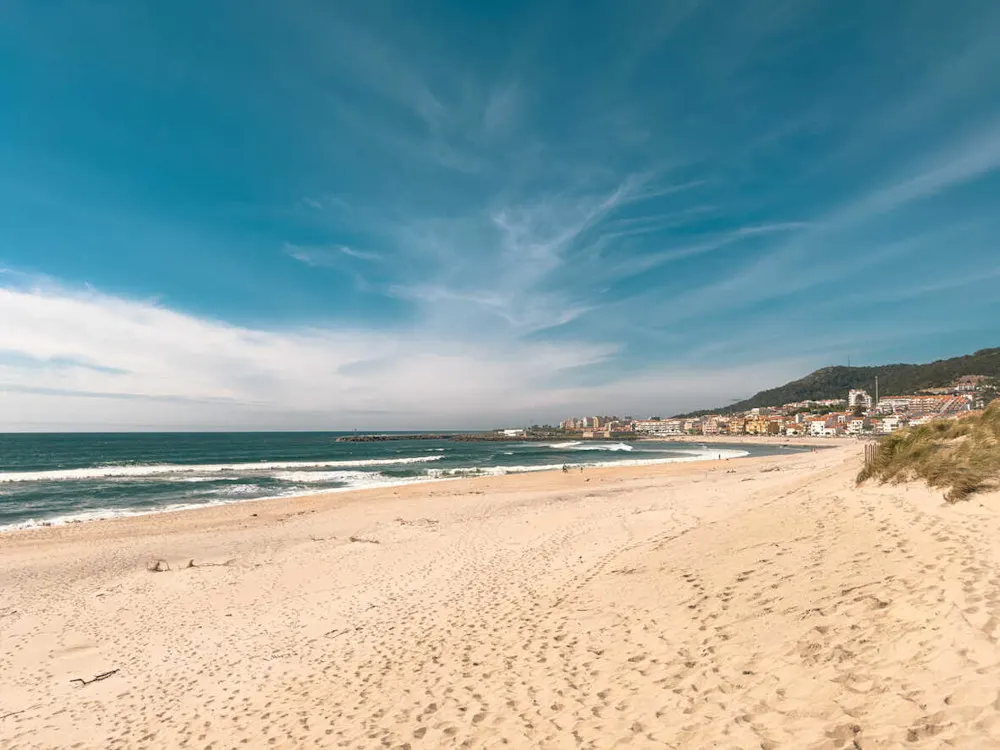
My week of touring northern Portugal boiled down to this for me…
If you want true big-city living, Porto objectively beats Lisbon. It’s prettier, quieter, slightly more affordable, all the same amenities, and equally convenient in terms of international airport access.
If you need sand between your toes, but you’re not hellbent on recreating a Southern California lifestyle on the cheap in the Algarve, Vila Praia de Âncora wins. It’s small, lovely, and affordable, and the proximity to nature sets it apart.
If a quiet life along a scenic river is what you seek—and you don’t mind wet and cool weather—Caminha is a gem of a town without equal in Portugal.
For big-city amenities in a small-city setting, you cannot beat Braga. There’s not another city in Portugal that rivals what Braga offers in terms of geographic ambiance, housing value, and city access.
As I said at the start, this is a very different part of Portugal—a better part of Portugal from my perspective. If you’re one of the Americans contemplating a relocation to Portugal, you’d be remiss not to give the north a good look.
It’s truly lovely up here.
Get Your Free Portugal Report Today!
Get Your Free Portugal Report Today!
Discover more info about lesser-known parts of Portugal and other European countries in our daily postcard e-letter. Simply enter your email address below and we’ll send you a FREE REPORT – Explore the Old World in Laidback Portugal.

By submitting your email address, you will receive a free subscription to IL Postcards, The Untourist Daily and special offers from International Living and our affiliates. You can unsubscribe at any time, and we encourage you to read more about our Privacy Policy.
